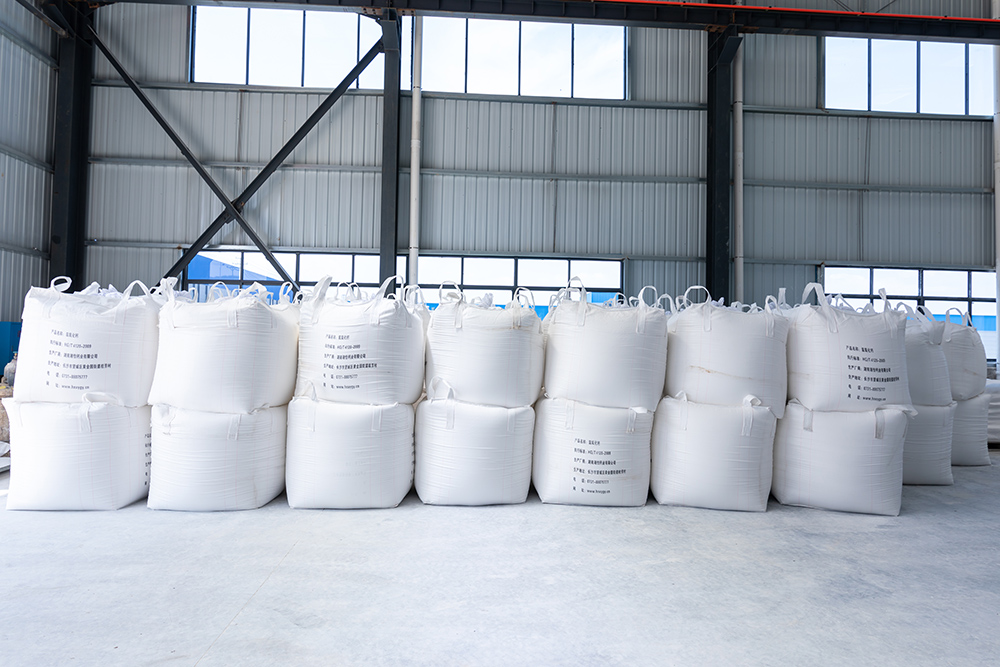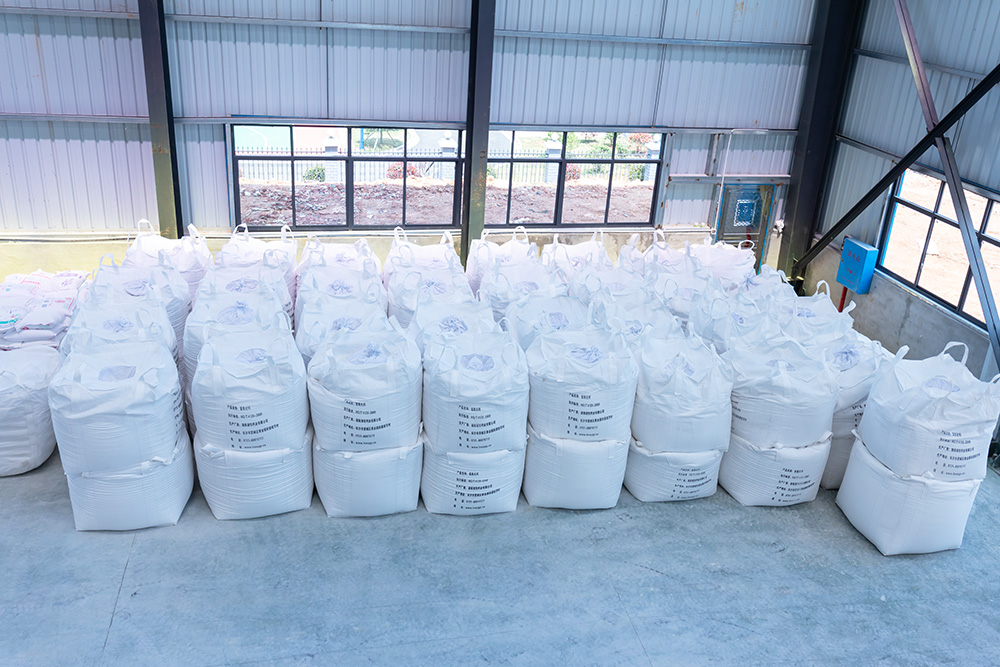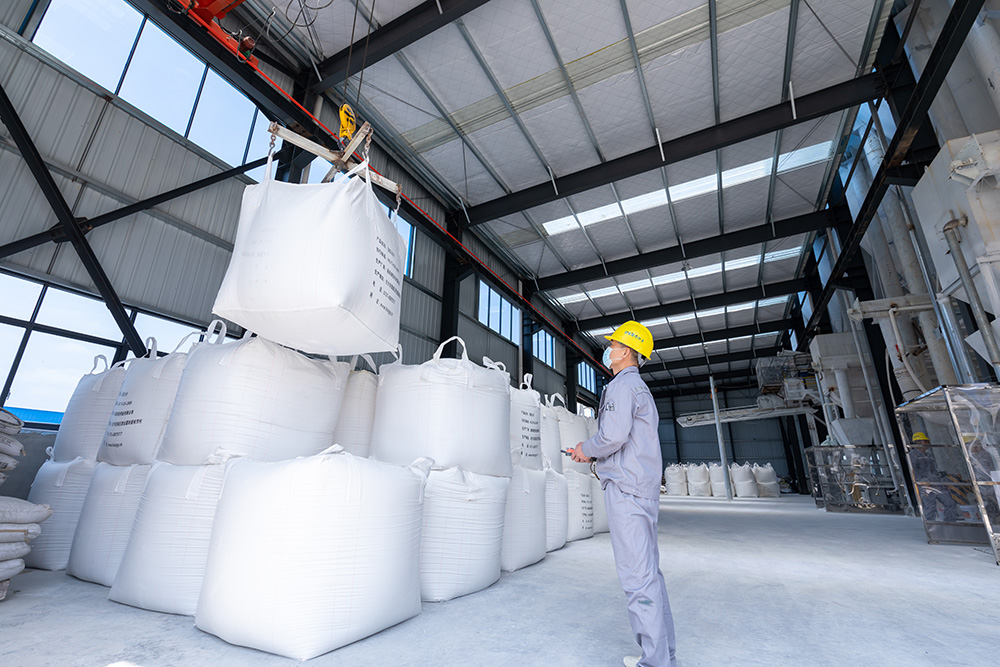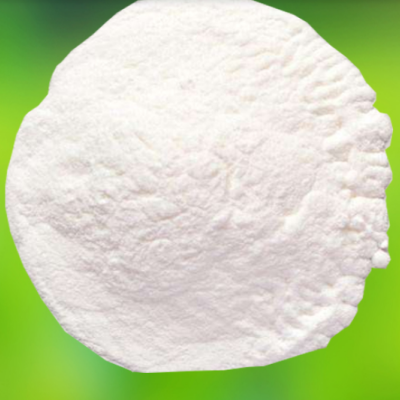
Products
High quality food-grade calcium hydroxide
Edible calcium hydroxide (calcium content ≥ 97%), also known as hydrated lime, hydrated lime. Character: White powder, with alkali taste, with bitter taste, relative density 3.078; It can absorb CO₂ from the air and convert it into calcium carbonate. Heat to above 100 ℃ to lose water and form a carbonate film. Extremely insoluble in water, strongly alkaline, pH 12.4. Soluble in saturated solutions of glycerol, hydrochloric acid, nitric acid, and sucrose, insoluble in ethanol.
As a buffer, neutralizer, and solidifying agent, food grade calcium hydroxide can also be used in medicine, the synthesis of food additives, the synthesis of high-tech biomaterials HA, the synthesis of VC phosphate esters as feed additives, and the synthesis of calcium naphthenate, calcium lactate, calcium citrate, additives in the sugar industry, water treatment, and high-end organic chemicals due to its role in pH regulation and coagulation. Provide effective assistance in the preparation of acidity regulators and calcium sources such as edible semi-finished products, konjac products, beverage products, pharmaceutical enemas, etc.
Packaging, storage and transportation
Packed in plastic woven bags lined with polyethylene film bags, with a net weight of 25kg per bag. It should be stored in a dry warehouse. Strictly prevent dampness. Avoid co storage and transportation with acids. During transportation, it is necessary to prevent rain. When a fire occurs, water, sand, or a regular fire extinguisher can be used to extinguish it.







1. How can you distinguish Calcium hydroxide from Calcium oxide? What is the method of distinguishing them? Where to differentiate?
About those questions, we Calcium hydroxide manufacturers ,will give you four good methods as follows,
1. Put the powder into the test tube, add excessive carbon powder, plug the bottle mouth with a single hole rubber plug with a tube, and place a bottle of burning Alcohol burner at the exhaust tube mouth.
2. Heat at high temperature using an alcohol burner
3.After sufficient reaction, stop heating.
4. Cool the test tube to room temperature, pour out the remaining solids, and distinguish the color of the product.
Because CaO+3C=(high temperature) CaC2+CO ↑, Ca (OH) 2 does not react with C. Carbon is a black solid, calcium carbide is a gray, brown yellow or brown massive solid, and Calcium hydroxide is a white solid.]If the product color is black and white, only Calcium hydroxide is proved.
If the product color is black and gray, brown yellow or brown, it proves that there is only Calcium oxide.If the product color is black, white, and gray, brownish yellow, or brown, it indicates a mixture of the two.
Conclusion: The above four methods are to distinguish Calcium oxide from Calcium hydroxide. The method is relatively simple. Professional people do professional things. If you want to know more, please pay attention to our Calcium hydroxide manufacturer.
2.How can Calcium hydroxide be transformed into Calcium oxide? What is the method for Calcium hydroxide to become Calcium oxide?
It is very simple for Calcium hydroxide to be converted into Calcium oxide, which is a common chemical method. We Calcium hydroxide manufacturers will tell you about this.
Calcium hydroxide needs to react with carbon dioxide to produce calcium carbonate, which can be heated at high temperature to produce Calcium oxide.
1. Calcium hydroxide reacts with carbon dioxide to form calcium carbonate precipitation and water.
2. Calcium oxide and carbon dioxide can be generated by heating calcium carbonate precipitation at high temperature (heating to 900 ℃ at 101.325 kPa).
The uses and properties of Calcium oxide are:
1. Can be used as a filler, for example: as a filler for epoxy adhesives;
2. Used as an analytical reagent, carbon dioxide absorber for gas analysis, spectroscopic analysis reagent, high-purity reagent for epitaxial and diffusion processes in semiconductor production, laboratory ammonia drying, and alcohol dehydration.
3. It can be used as raw material to produce calcium carbide, soda ash, bleaching powder, etc., as well as leather making, wastewater purification, Calcium hydroxide and various calcium compounds;
4. Can be used as a building material, metallurgical flux, cement accelerator, and flux for fluorescent powder;
5. Used as a plant oil decolorizer, drug carrier, soil conditioner, and calcium fertilizer;
6. It can also be used as refractory materials and desiccants;
7. It can be used to prepare agricultural machinery No.1 and No.2 adhesives and underwater epoxy adhesives, and also as a reactant for prereaction with 2402 resin;
8. Used for acidic wastewater treatment and sludge conditioning;
9. It can also be used as a protective agent for boiler shutdown, utilizing the moisture absorption ability of lime to keep the metal surface of the boiler water vapor system dry and prevent corrosion. It is suitable for long-term shutdown protection of low-pressure, medium pressure, and small capacity drum boilers;
10. Calcium oxide is a Basic oxide, which is sensitive to humidity. Easy to absorb carbon dioxide and water from the air. It can react with water to prepare Calcium hydroxide, which belongs to Combination reaction.






